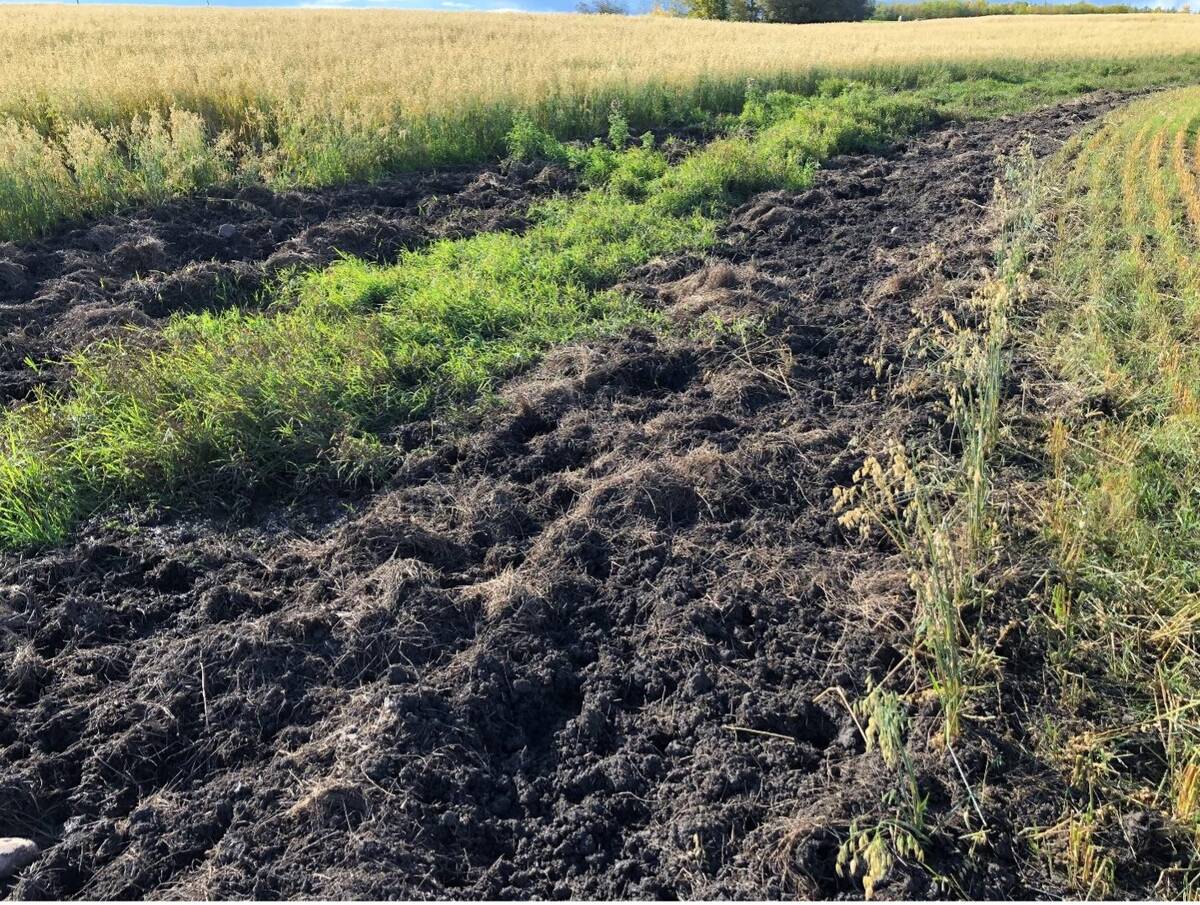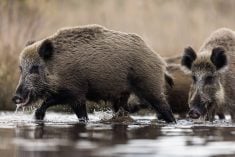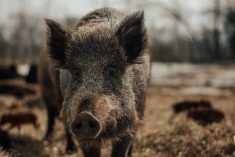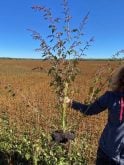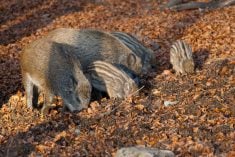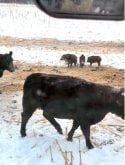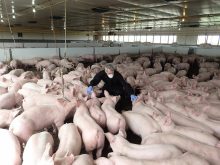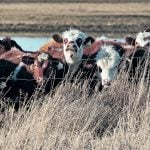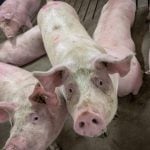Efforts to control Manitoba’s wild pig population are ramping up, but the province’s situation differs significantly from the invasive pig crisis in the United States, says Wayne Lees, co-ordinator of Squeal on Pigs Manitoba, a program dedicated to the reporting and control of wild pigs.
WHY IT MATTERS: Wild pigs are considered a threat to both animal and human health, with impacts ranging from bacterial contamination of water, damage to natural habitats, agricultural hits from uprooted and trampled crops, not to mention their potential to carry disease, including diseases of significant concern to the pork sector, like African swine fever.
The spread of wild pigs in Canada, in particular on the Canadian Prairies, has drawn concern from wildlife experts and agriculture.
Read Also
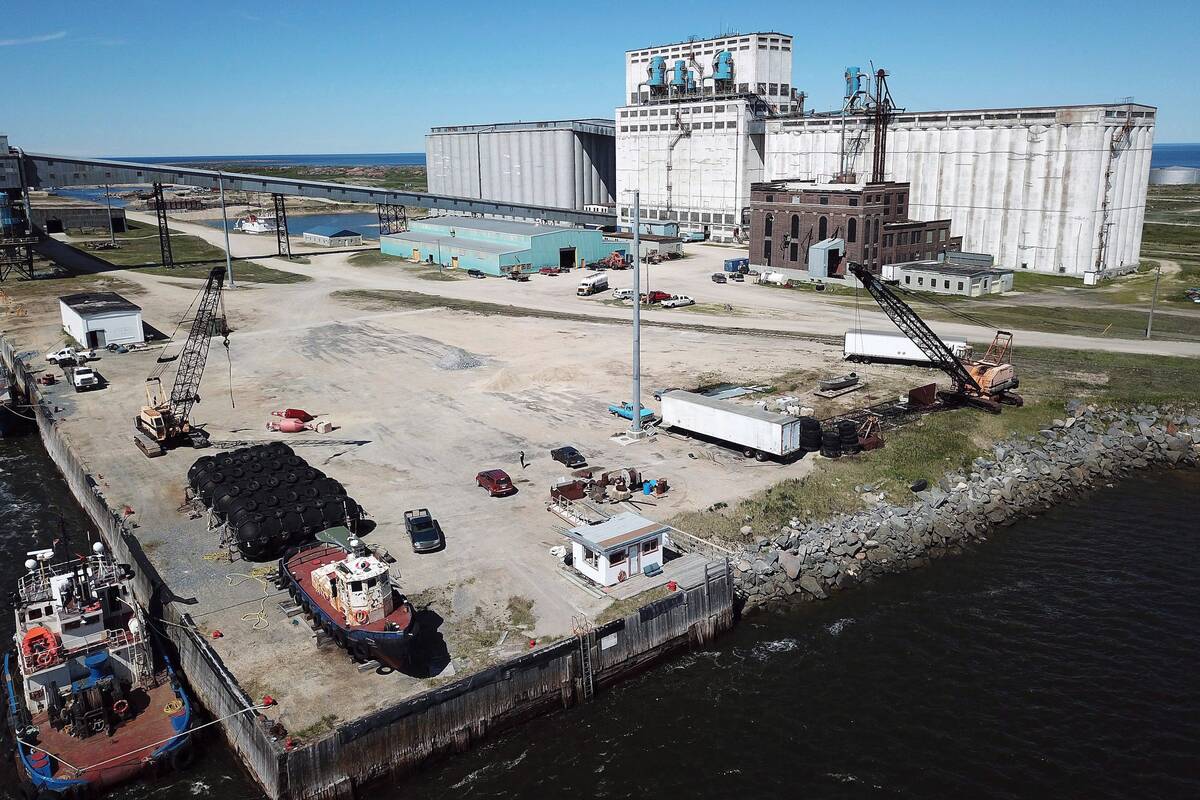
New Crown-Indigenous partnership to spearhead Churchill expansion
Province announces new Manitoba Crown-Indigenous Corporation to co-ordinate Port of Churchill Plus revamp, bolster northern development and trade
The agriculture sector has seen the damage the species has done in the U.S., where the U.S. Department of Agriculture estimates they cost farmers US$2.5 billion a year and define them as “one of the most devastating invasive species in the U.S. today.”
The USDA suggests that six million feral swine are spread over 35 American states.
Up north, the Canadian spread has led some Prairie experts to question whether populations have moved past the point where eradication is possible.
Lees, however, says the situation in the U.S. has some key differences to the one his organization faces in Manitoba.
Wild pig populations are blooming in the southern U.S., he said, but Manitoba’s pigs do not reproduce at nearly the same rate and their overall numbers are believed to be much lower. Manitoba’s wild pigs give birth to three to 11 piglets per litter.
“From our data, the average litter size is five to six piglets, but the range can be from three to 11,” Lees said. “We don’t yet have the field data to know how often they can have a litter. Commercial pigs can have two litters per year, but we are questioning whether or not wild pigs can reproduce that quickly, given the limiting factors of feed availability and severe weather.”
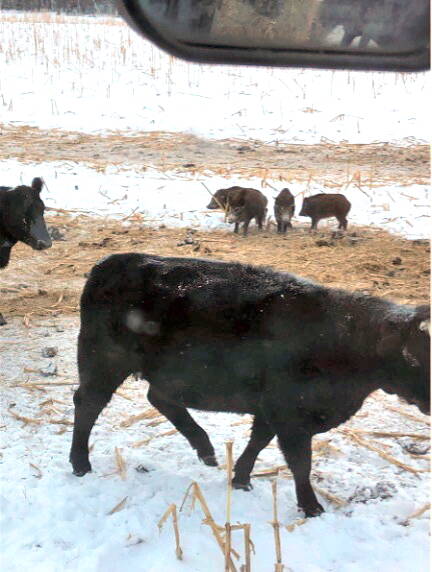
Manitoba’s wild pig population primarily consists of escaped Eurasian wild boar and hybrid pigs. These animals are highly adaptable, but they also face harsher conditions than their U.S. counterparts. Cold winters and deep snow present survival challenges, and researchers have found that their reproductive rates are lower than previously thought.
Lees also pushes against the term “super pigs,” which has made the rounds in media pertaining to Canadian wild swine. It’s his view that the province’s wild pigs are threat enough without the embellishment.
“They’re a threat to the environment, they’re a threat to animal health and they’re a threat to human safety. They’re intelligent and well adapted, but we don’t have any sort of superpower to these pigs, and I think that’s really been unfortunate, that that narrative has taken hold,” he said.
Squeal on Pigs Manitoba
Squeal on Pigs Manitoba, which is funded through the federal-provincial Sustainable Canadian Agricultural Partnership program, operates differently from similar programs in other provinces, Lees said. Unlike government-run initiatives, the program is managed in partnership with the Manitoba Pork Council and relies heavily on collaboration with landowners rather than regulation and enforcement.
That distinction has been an advantage when working with farmers and ranchers, Lees said.
“When we’re talking to landowners, we’re not coming across as a government official,” he said. “We don’t have any regulatory enforcement powers … collaboration with the landowners is really key to our success.”
Squeal on Pigs Manitoba has been collecting data on population dynamics, using drones with thermal imaging, environmental DNA testing and extensive landowner surveys to track pig movements. A recent update from the program noted that 204 pigs were removed through the program’s trapping efforts in 2024. In 2023, it had reported 127 pigs removed.
As of that update, the program boasted 30 traps and 100 trail cameras in its inventory
The biggest challenge is actually finding out where the pigs are, Lees said. Canadian wild pigs are more elusive compared to the U.S., he argued.
Public key to wild pig fight
Public reporting remains an important tool for his organization. Landowners and residents call in sightings, which are then followed up on. Hunters that take a wild pig are also required to report the kill to Squeal on Pigs. Regular hunting though, is discouraged. Experts commonly warn that hunting tends to scatter groups of pigs, making the problem worse, while also making the animals even more gun shy and hard to find.
“What we found is that hunting just doesn’t work,” Lees said, adding that most hunters are unsuccessful anyways.
”Usually, when you go hunting, first of all, most people don’t see pigs. If they encounter pigs, it’s usually because they’re hunting something else, and they just happen to come across them.”
Instead, the program focuses trapping efforts on whole sounder removal using corral and net traps, set up with landowner co-operation. Once pigs are caught, they are humanely euthanized, and their remains are composted.
“Once pigs are actually captured, then we’ll go out and remove them,” Lees said.
High-tech wild pig control
New technologies are making it easier for Squeal on Pigs to track and capture wild pigs, Lees said.
Drones equipped with thermal imaging cameras are proving to be one of the most effective tools for locating pigs, particularly in areas where they would otherwise be difficult to detect.
The organization has also started developing environmental DNA testing in partnership with Assiniboine College and BDx Enviro laboratories in Winnipeg to detect pig presence based on the genetic material they leave behind in water sources.
“We’ve taken the protocol that was developed in the U.S. by the USDA, but found it didn’t really work too well in our circumstance,” Lees said. “So, we had to make modifications and do our own validation of the test.”
Hope for the cause
Lees believes that, unlike in parts of the U.S. where wild pig populations are entrenched, eradication is a real possibility in Manitoba.
“I think we can get rid of them,” he said. “I think it’ll take some time and perseverance, but I’m pretty confident that we can get rid of them. I don’t think we have that many that we’re going to be overwhelmed, but we do need to get on top of these animals, especially in the hot spot, which is really Spruce Woods.”
A national map of wild pig occurrences is in development, and ongoing studies aim to better understand pig behavior and movement.
One major initiative on the horizon is a summit on April 29 and 30 in Winnipeg that will focus on emergency management and foreign animal disease response. The event is expected to bring together government officials and industry experts to develop strategies for dealing with potential disease threats posed by wild pigs.


